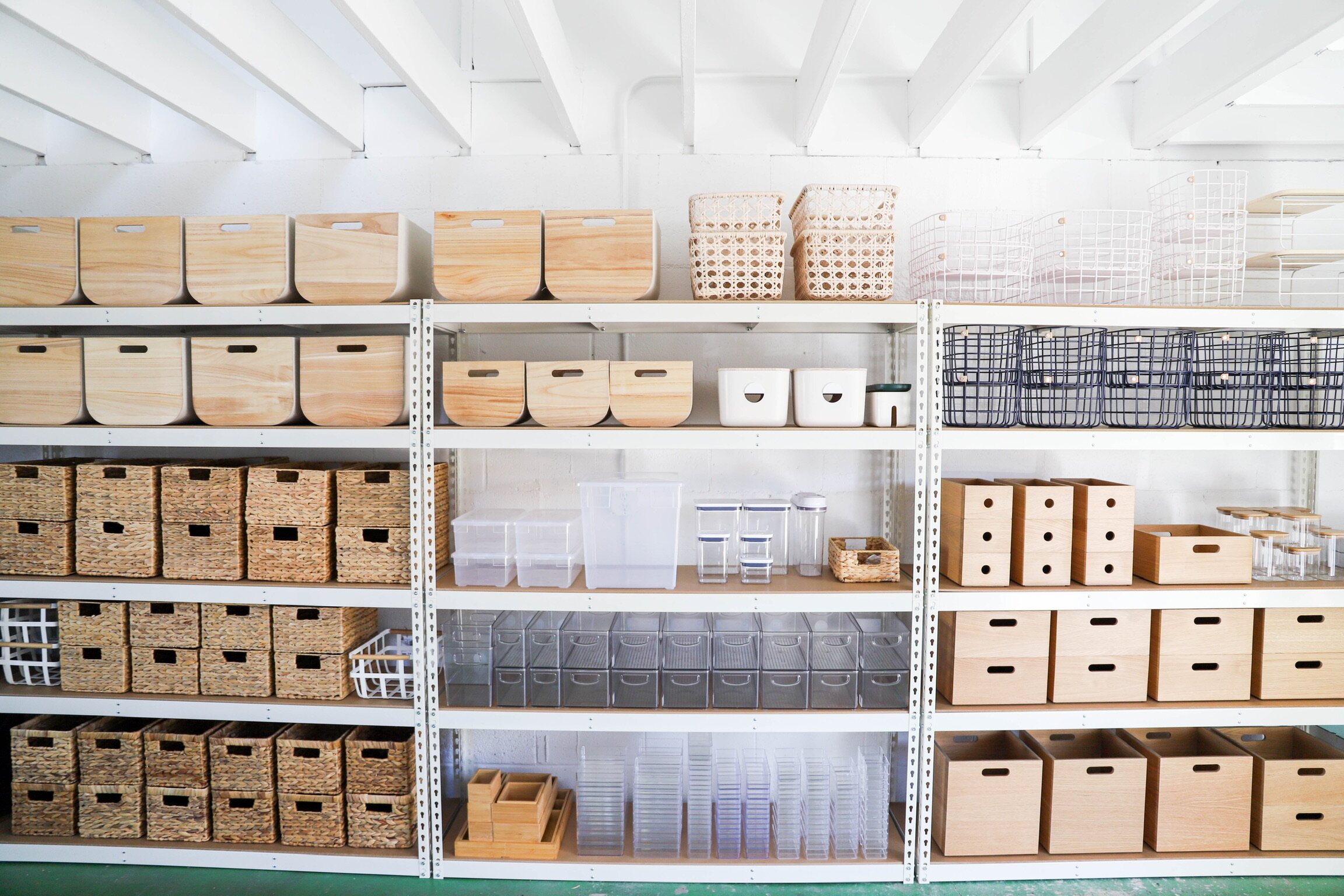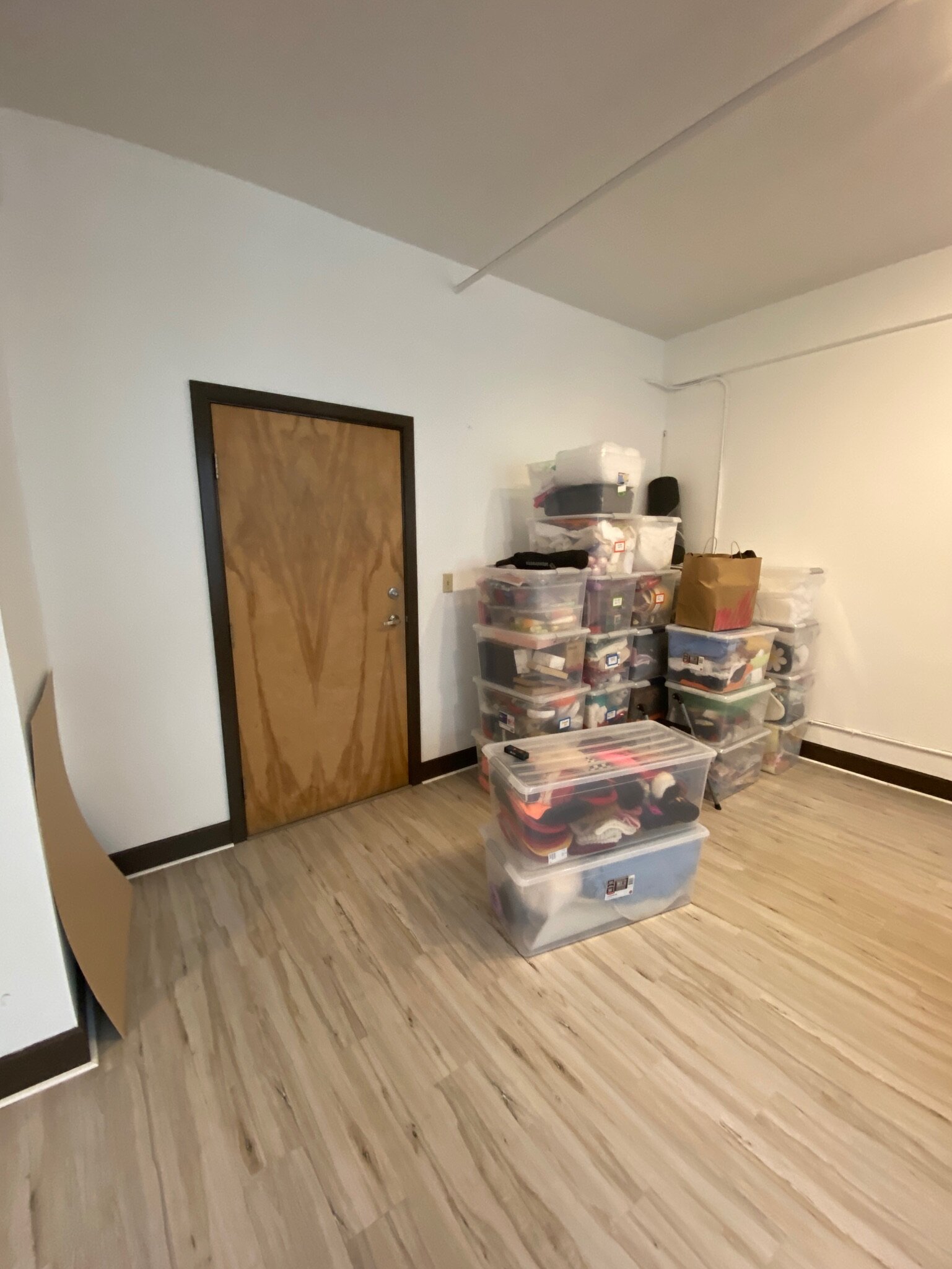Shelving 101
Shelving is the unsung hero of organizing. Yes there is some cool, attention-worthy shelving out there, but usually it’s reserved for books or fancy dishes. But what about all that other stuff you need to store? Your boxes of holiday decorations and luggage? Your lightbulbs and family heirlooms and the fondue pot you pull out once a year? All that stuff needs to live somewhere, and more often than not, it needs to live on a shelf.
Because there are so many (too many) options out there, I’m writing this to help narrow the scope a little bit. I want to help you determine what you need, guide you on where to find it, and then show you how to organize with it.
Let’s start at the beginning. Why do we need shelving to be organized?
Benefits of Shelving:
fills vertical space + adds structure to a room
creates easily accessible, useable storage space
helps keep items off the floor (especially important in dirty or flood-prone spaces)
There are lots of different kinds of shelves on the market, here are the most common categories:
Free Standing Shelving
These are shelves that don’t need to be affixed to the wall (though you may want to bolt them so they don’t fall over).
Wall-Mounted Shelving
These are shelves that are designed to be mounted onto the wall and don’t touch the floor.
Adjustable Melamine Shelving
This is what you see in lots of closets, but also can be a great solution for garages, pantries, and offices.
Decor Shelving
This kind of shelving is meant to be both for storage and aesthetics. Think: styled bookshelves and open cabinets.
Custom Shelving
This is usually built by a carpenter or woodworker and made specifically for your home and your needs.
What kind of shelving is right for me?
The major factors I like to consider before recommending shelving to clients are:
functionality
budget
aesthetics
(scroll down to read more about each of these)
Functionality
This is the most important factor to consider. If you’re going to put in the effort and spend the money to add shelving to your home, you need to make sure it’s going to be functional for you and meet your needs properly.
I’d start by asking yourself what you need to store in the space. Will the items you’re looking to store need to go in bins or containers? If so, it’s a good idea to measure these containers (or source some) and choose shelving that the containers will fit onto.
You also want to look at your space. Do you have extra high ceilings? Are your floors uneven? You may want to go the wall-mounted route in that case, both to maximize your storage opportunities and to save yourself the hassle of dealing with wobbly shelves.
How long will you be in your home? If you’re renting or living somewhere temporarily, it’s probably best to buy free standing shelves that you can bring with you when you move.
If you’re storing extremely heavy items (for example, extra tile from a home renovation, or boxes of heavy books), you’ll need to make sure you invest in really strong and sturdy shelving.
Lastly, are you ok with open shelving or do you need doors or cabinets on your shelves? If you feel like you will want to be able to just shut the doors and not see what’s inside (and this can be a life-saver in rooms you use a lot), you’ll want to consider going the adjustable melamine or custom shelving route.
Budget
Shelving can really add up, especially if you have a lot of things to store or a large space to fill. I definitely recommend crunching some numbers before you decide what route to go. Free standing shelving is usually the cheapest route, but if you need a lot of them, you may find that a semi-custom solution from Ikea or Container Store is a comparative route cost-wise.
If you have an awkward space or a really tiny home where every inch matters, it might make sense for you to explore the custom route where you can build exactly what you want.
If you plan to be in your home for a long time, also try to think through the long-term use of the space you’re organizing. If you are adding shelving to a home office that may become a nursery some day, keep this in mind before you decide what to buy. I always encourage my clients to invest in something that will work for them long term vs. just buying something random that seems like a good price at the time.
Aesthetics
Last but not least, aesthetics. After you’ve considered functionality and budget, you will want to think about how you want your space to look before you finalize your plan. The great news is that there are a lot of beautiful options on the market in all shapes, sizes and price points. I’m going to link my favorite shelving resources below, but regardless of where you shop, take the time to think through how you ideally want your space to look once you’re done.
For me, I tend to gravitate towards lighter and brighter spaces and choose a lot of white shelving. I also try to match the aesthetic of the shelf to the space I’m organizing. For example, I’ll use something more bulky and utilitarian in a garage, but I will want something smaller and more natural looking in a baby’s nursery. There’s no right or wrong answer here (which is great news), just a gentle reminder to look at the options and consider your ideal final look before you pull the trigger on anything.
Shopping Resources
Here are some of our go-to shelves that we love to use in homes!
We use these free standing shelves all the time. I love that they’re inexpensive, they come in three colors (white, black, and silver) and they look great in industrial spaces like garages, basements and kitchens.
These are the shelves we use at our Space Camp office, and we love them. They’re extremely sturdy, easy to put together, and they look great all lined up.
Elfa is a wall-mounted system The Container Store sells and it’s a great customizable solution with a wide range of price points. Associates at the store will design your space for free (they’ll even help you measure), and we love that the systems look sleek and function well too.
Ikea’s Pax line is an affordable entry into the adjustable melamine world of shelving. There’s an online tool that allows you to design your space, or you can go into the store and have an employee help you.
For a custom look without the custom pricetag, we love Semihandmade. They’re a company that uses Ikea cabinets and fabricates higher-end doors to add to them.


















